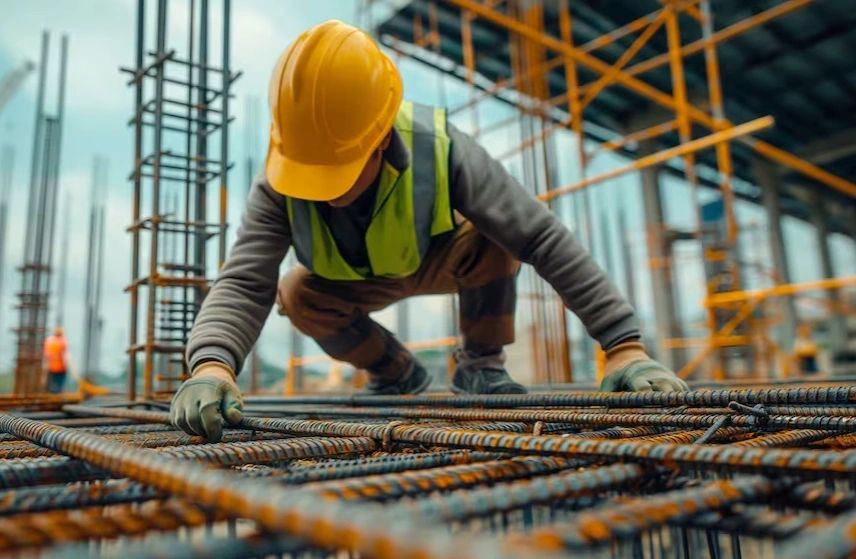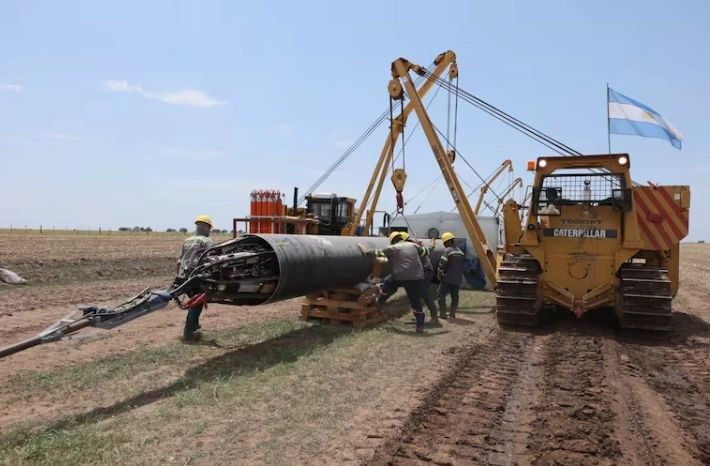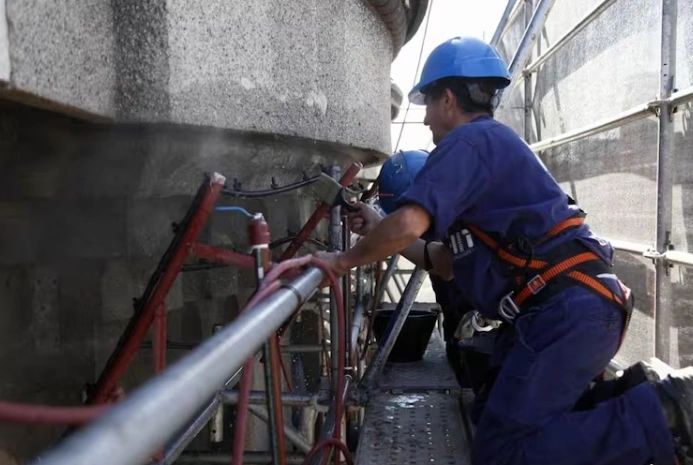BuySellBA
Administrator
Construction and real estate: how to work in a context of high costs and lack of financing - La Nacion Propiedades

Source:

 www.lanacion.com.ar
www.lanacion.com.ar
June 25, 2025
The housing economist analyzes the current situation of the construction industry, the current state of mortgage lending, and the challenges of the real estate market.

In April, construction activity registered a monthly growth of 5.1%, although it remains 20% below the peak reached in November 2023.Shutterstock
The latest construction activity data showed that the sector is continuing the same pattern that began almost a year ago: an attempt to recover is followed by a setback, and then a restart. What was once euphoria over the impact of the money laundering and credit reforms has, as of today, yielded two initial conclusions: it was directed at intermediation (not construction) and had a significant but limited impact. On the non-residential construction side, there appears to be greater recovery, albeit from a considerably smaller starting point. The return of some provincial public works and the reorientation of some demand toward infrastructure projects for the energy sector put a floor under the decline.
In April, construction grew 5.1% monthly , the largest change recorded since July 2024. After 10 months of stagnation, it reached its highest level since December 2023, but still 20% lower than the peak in November 2023.

The partial recovery of non-residential works and the return of provincial projects put a floor under the sector's decline.
However, leading indicators for May show declines. Thus, the pattern that began a year ago—short-lived recoveries that fail to consolidate, followed by setbacks and a return to the previous point —appears to continue on the near horizon. Construction employers' negative expectations for the next quarter reached 17.6%, the highest since July 2024, while positive expectations fell to 14.8%, the worst levels in almost a year.
The dollar cost per square meter is putting a brake on private construction, while budgetary restrictions are limiting public works.

Construction costs in dollars rose more than 100% between December 2023 and May 2025, putting pressure on the sector's profitability.Government of the City of Buenos Aires
The expectation of money laundering was channeled toward intermediation (not construction) and had a significant, but limited, impact. The new initiative to "use the dollars in the buffer" has not yet resolved tax issues, and Congress does not appear to be offering a smooth process for the legislative bill.
The real estate sales market continues to rise, although with differences depending on the segment: prices for underperforming properties continue to rise, albeit slowing, while in some cities, prices for existing properties are gaining momentum. The appreciation of existing properties is key to lowering the relative price of new units, which will drive construction.
However, rising construction costs in dollars (up 1.4% in April and up 10% in May), driven by the fall of the dollar, are putting pressure on the sector's profitability. Construction costs in dollars rose 84% from the start of the presidential term until April, and 103% until May , forcing the sector to rethink its business model in the face of a significantly higher cost structure. The expectation of reducing costs through imports is limited to some inputs, but it does not offset an appreciated exchange rate.

In May, US$298 million in UVA mortgage loans were granted, the largest volume since 2018; 90% of these loans went to families.CrizzyStudio - Shutterstock
In terms of profitability, the direct construction cost (excluding taxes, profit, or marketing expenses, for example) represented 35% of the value of a square meter of land. In the city of Buenos Aires, the average direct construction cost per square meter is US$1,020, while the average square meter of land is valued at US$2,893. In November 2023, for example, the direct cost impact was 22%, and throughout 2021, it averaged 19%.
The term remains stable at 24 years. As of February, the latest available data, Banco Nación remains the leading bank in the mortgage market, followed by Galicia, Macro, and Banco de Córdoba.

The consolidation of credit as a driving force for construction will depend on achieving more accessible and sustainable long-term financing schemes.Shutterstock
In April, the real estate market maintained its growth rate, and 2025 is poised to reach near-record levels. In Buenos Aires City, 5,471 deeds were registered , the highest number since 2018 , with a strong rebound in mortgage lending (1,192 transactions, +946% year-on-year), albeit from a very low base. In the Province of Buenos Aires, a record high was also reached for April with 12,158 deeds , 60% more than in 2024, although with a lesser role for UVA credit due to the absence of Banco Provincia in that market. Córdoba showed a different performance, according to data from the Chamber of Real Estate Brokers of the province: transactions fell 4% year-on-year, although they remain 61% above 2023, reflecting a loss of momentum in local mortgage lending, after a more dynamic start thanks to Banco de Córdoba, which recently reduced its share.
The mortgage market is preparing the ground for eventual securitization , which would allow for greater genuine, long-term funding. This partially explains the rate hike, although the process of unloading portfolios will be slow. Without this, mortgage volume will remain at these levels, close to US$300 million per month on average, enough to account for 20% of mortgages in Buenos Aires, 15% in PBA, and nearly 10% in Córdoba, currently the country's largest markets.
Possibly, those involved in the construction chain are unaware of the volume of investment, employment, and income that reaching these levels would entail. The improvement in prices that this increased financing could generate is the driving force needed for this new high-cost system to make private construction profitable again. However, all of the aforementioned is far from guaranteed, and managing the transition is the sector's challenge going forward.
www.buysellba.com

Source:
Construcción y mercado inmobiliario: cómo trabajar en un contexto de costos altos y sin financiamiento
El economista experto en vivienda analiza el momento que atraviesa la industria de la construcción, el presente de los créditos hipotecarios y los desafíos del mercado inmobiliario
June 25, 2025
The housing economist analyzes the current situation of the construction industry, the current state of mortgage lending, and the challenges of the real estate market.

In April, construction activity registered a monthly growth of 5.1%, although it remains 20% below the peak reached in November 2023.Shutterstock
The latest construction activity data showed that the sector is continuing the same pattern that began almost a year ago: an attempt to recover is followed by a setback, and then a restart. What was once euphoria over the impact of the money laundering and credit reforms has, as of today, yielded two initial conclusions: it was directed at intermediation (not construction) and had a significant but limited impact. On the non-residential construction side, there appears to be greater recovery, albeit from a considerably smaller starting point. The return of some provincial public works and the reorientation of some demand toward infrastructure projects for the energy sector put a floor under the decline.
In April, construction grew 5.1% monthly , the largest change recorded since July 2024. After 10 months of stagnation, it reached its highest level since December 2023, but still 20% lower than the peak in November 2023.

The partial recovery of non-residential works and the return of provincial projects put a floor under the sector's decline.
However, leading indicators for May show declines. Thus, the pattern that began a year ago—short-lived recoveries that fail to consolidate, followed by setbacks and a return to the previous point —appears to continue on the near horizon. Construction employers' negative expectations for the next quarter reached 17.6%, the highest since July 2024, while positive expectations fell to 14.8%, the worst levels in almost a year.
The dollar cost per square meter is putting a brake on private construction, while budgetary restrictions are limiting public works.

Construction costs in dollars rose more than 100% between December 2023 and May 2025, putting pressure on the sector's profitability.Government of the City of Buenos Aires
The expectation of money laundering was channeled toward intermediation (not construction) and had a significant, but limited, impact. The new initiative to "use the dollars in the buffer" has not yet resolved tax issues, and Congress does not appear to be offering a smooth process for the legislative bill.
The real estate sales market continues to rise, although with differences depending on the segment: prices for underperforming properties continue to rise, albeit slowing, while in some cities, prices for existing properties are gaining momentum. The appreciation of existing properties is key to lowering the relative price of new units, which will drive construction.
However, rising construction costs in dollars (up 1.4% in April and up 10% in May), driven by the fall of the dollar, are putting pressure on the sector's profitability. Construction costs in dollars rose 84% from the start of the presidential term until April, and 103% until May , forcing the sector to rethink its business model in the face of a significantly higher cost structure. The expectation of reducing costs through imports is limited to some inputs, but it does not offset an appreciated exchange rate.

In May, US$298 million in UVA mortgage loans were granted, the largest volume since 2018; 90% of these loans went to families.CrizzyStudio - Shutterstock
In terms of profitability, the direct construction cost (excluding taxes, profit, or marketing expenses, for example) represented 35% of the value of a square meter of land. In the city of Buenos Aires, the average direct construction cost per square meter is US$1,020, while the average square meter of land is valued at US$2,893. In November 2023, for example, the direct cost impact was 22%, and throughout 2021, it averaged 19%.
The current state of mortgage loans
In May, US$298 million in UVA mortgage loans were granted. This represents a 7% improvement compared to April and the highest level since May 2018 (US$445 million). Ninety percent of all mortgage financing was in UVA to private individuals (families). The lack of liquidity facing the mortgage sector continues to translate into rising interest rates: the average rate was 6%, one point above the 5% recorded in October , when the rate hike process began, leading most institutions to raise their financing costs (except for Banco Nación, among the largest).The term remains stable at 24 years. As of February, the latest available data, Banco Nación remains the leading bank in the mortgage market, followed by Galicia, Macro, and Banco de Córdoba.

The consolidation of credit as a driving force for construction will depend on achieving more accessible and sustainable long-term financing schemes.Shutterstock
In April, the real estate market maintained its growth rate, and 2025 is poised to reach near-record levels. In Buenos Aires City, 5,471 deeds were registered , the highest number since 2018 , with a strong rebound in mortgage lending (1,192 transactions, +946% year-on-year), albeit from a very low base. In the Province of Buenos Aires, a record high was also reached for April with 12,158 deeds , 60% more than in 2024, although with a lesser role for UVA credit due to the absence of Banco Provincia in that market. Córdoba showed a different performance, according to data from the Chamber of Real Estate Brokers of the province: transactions fell 4% year-on-year, although they remain 61% above 2023, reflecting a loss of momentum in local mortgage lending, after a more dynamic start thanks to Banco de Córdoba, which recently reduced its share.
The mortgage market is preparing the ground for eventual securitization , which would allow for greater genuine, long-term funding. This partially explains the rate hike, although the process of unloading portfolios will be slow. Without this, mortgage volume will remain at these levels, close to US$300 million per month on average, enough to account for 20% of mortgages in Buenos Aires, 15% in PBA, and nearly 10% in Córdoba, currently the country's largest markets.
The challenges
Going forward, the construction and real estate markets face specific challenges: how to operate in a context of high costs and a lack of financing while waiting for the end-of-life scenario to consolidate. This target (or desired) scenario is one with greater and better sources of financing, both for purchase and construction. Today, bank lending for construction represents only 2% of all credit, while it reached 7% in the early 1990s. Credit for home purchases represents 0.2% of GDP, compared to 4% 30 years ago. The potential, simply by reaching these levels, is infinite.Possibly, those involved in the construction chain are unaware of the volume of investment, employment, and income that reaching these levels would entail. The improvement in prices that this increased financing could generate is the driving force needed for this new high-cost system to make private construction profitable again. However, all of the aforementioned is far from guaranteed, and managing the transition is the sector's challenge going forward.
www.buysellba.com

